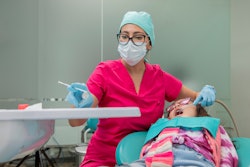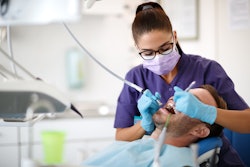
Dental hygienists experience a variety of inappropriate behaviors at work, including verbal attacks, sexual innuendos, and evaluation of their appearance, according to a study published on June 6 in the International Journal of Dental Hygiene.
Using a questionnaire that measures the violence dental hygienists experience at practices can help monitor situations and prevent hostile workplaces, wrote the study authors from South Korea.
"Investigating the workplace harassment experienced by clinical dental hygienists is important to create a healthy organizational culture in dental institutions; this can alleviate workplace stress experienced by dental hygienists and reduce the frequent turnover rate among them," wrote the group, led by So-Jung Mun from the department of dental hygiene at Yonsei University in Wonju.
Between 2011 and 2013, approximately 25,000 incidents of workplace violence occurred in the U.S. About 70% of those incidents involved healthcare delivery situations, including dental hygienists providing services to patients, according to a 2016 report released by the U.S. Occupational Safety and Health Administration.
To date, the International Federation of Dental Hygienists is composed of about 85,000 dental hygienists from 34 countries, including South Korea, the U.S., and Japan. The number of hygienists is increasing worldwide, and they face a high risk of exposure to workplace violence, the authors wrote.
Numerous prior studies have focused on nurses and their experiences with harassment and violence in the workplace. However, there has been little information about the challenges faced by dental hygienists.
To understand hygienists' experiences, the researchers developed a questionnaire based on the Negative Actions Questionnaire-Revised (NAQ-R) and the Workplace Bullying in Nursing-Type Inventory (WPBN-TI). The survey included 31 questions about verbal attacks and alienation, inappropriate work experiences, physical threats, workplace sexual harassment, and verbal violence. Approximately 200 hygienists responded to the survey.
The participants overall reported experiencing inappropriate behavior from superiors, colleagues, and patients and their family members, the authors wrote.
More specifically, 95 respondents (47%) experienced rudeness from colleagues, and 36 (18%) were subjected to sexual innuendos or evaluations of their appearance. In addition, 59 hygienists (29%) said they had witnessed patients and their family members openly ignoring their capabilities.
Limitations of the study included data not being analyzed for external validity. More dental hygienists from Korea and other countries need to use the workplace harassment measurement tool to verify its validity and reliability, the authors wrote.
With violent incidents continuing to occur at dental settings, it is critical to use structural tools to measure workplace violence against dental hygienists and to seek solutions, the group concluded.
"This study's results indicate that the workplace harassment experienced by clinical dental hygienists is not an individual-level issue; rather, it should be considered as a social problem," Mun and colleagues wrote.




















